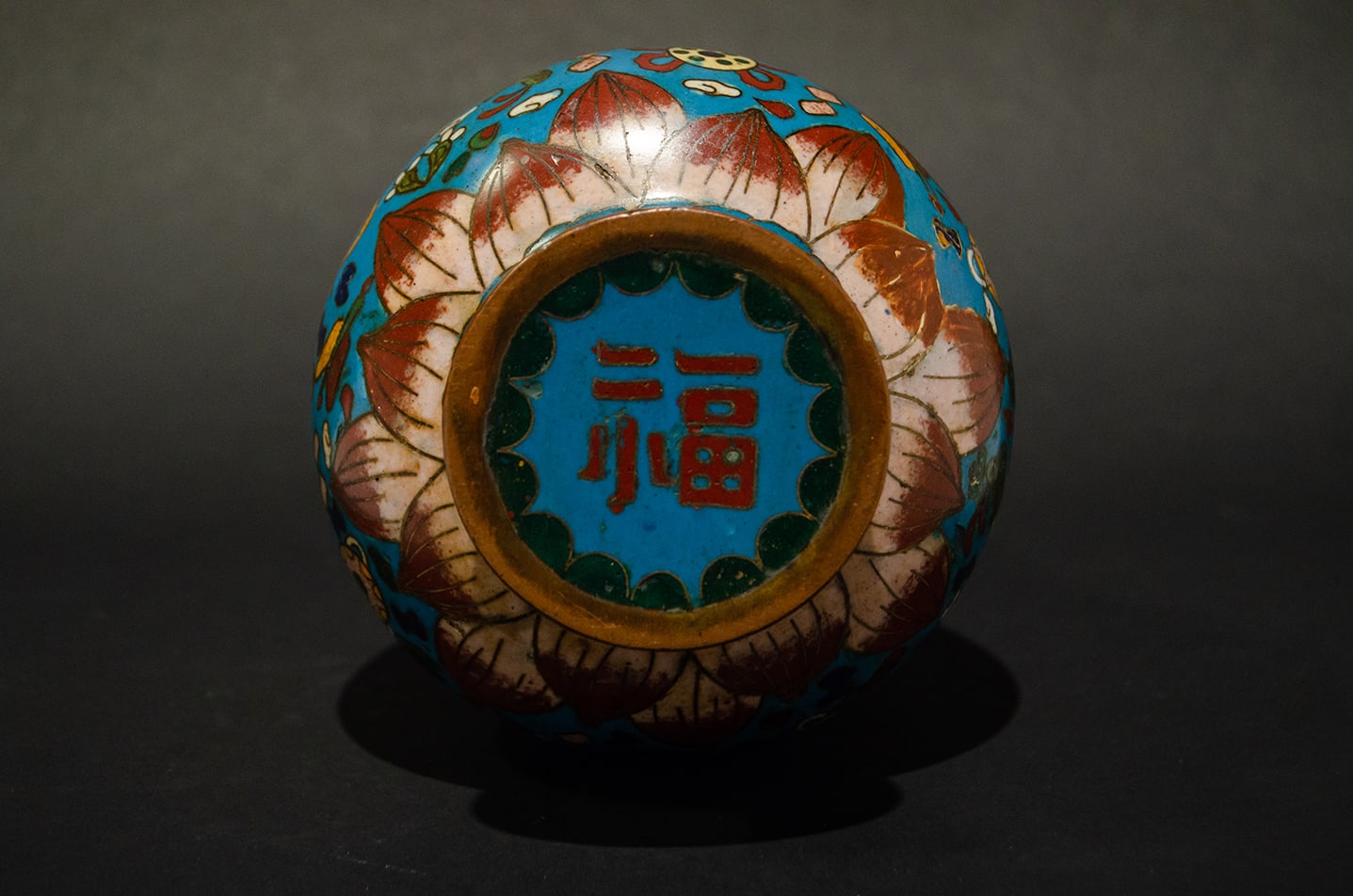Pair of Qing Cloisonné Vessels, 18th Century CE - 19th Century CE
Further images
Jing Tai Lan (the Chinese for cloisonné) is a unique form of art that combines sculpture, painting, copper smithing and porcelain making. Its name originates from a careful pairing of...
Jing Tai Lan (the Chinese for cloisonné) is a unique form of art that combines sculpture, painting, copper smithing and porcelain making. Its name originates from a careful pairing of “Jing Tai,” the name of a Ming dynasty emperor during whose reign mass production of such articles began, and “Lan,” meaning blue, which is the background color for most cloisonné goods. Cloisonné enamel techniques were originally brought from Persia to China’s Yunnan Province during the Yuan Dynasty. During the Ming dynasty, Persian techniques were then incorporated with the traditional, native techniques for metal inlaying and porcelain making, resulting in the birth of a new kind of cloisonné called Jing Tai Lan.
Belonging with the collection of item number MA.5, this unique pair of cloisonné vessels from the Qing dynasty are elaborately decorated in multi-colored enamels with leafy interlacing scrolls bearing lotuses and floral motifs. There is only one pictorial plane and there is minimal sense of ground or a steady uniform surface. Rather, the myriad of symbolic and precious articles that adorn the vessel are “floating” on the plane, as though thrown upwards against a turquoise blue sky from the lotus flower that encircles the base. Such objects of interest include dual characters, boxes, vases, bamboo, tulips, flutes, and carp. Curiously, the decorations on the pair are rendered in mirror image to each other.
Jing Tai Lan is one of the most exquisite cloisonné techniques in history, and as such, it is by far the most popular and sought-after type of cloisonné to be found. This rare and ornate piece is a must for collectors of Chinese art.
Belonging with the collection of item number MA.5, this unique pair of cloisonné vessels from the Qing dynasty are elaborately decorated in multi-colored enamels with leafy interlacing scrolls bearing lotuses and floral motifs. There is only one pictorial plane and there is minimal sense of ground or a steady uniform surface. Rather, the myriad of symbolic and precious articles that adorn the vessel are “floating” on the plane, as though thrown upwards against a turquoise blue sky from the lotus flower that encircles the base. Such objects of interest include dual characters, boxes, vases, bamboo, tulips, flutes, and carp. Curiously, the decorations on the pair are rendered in mirror image to each other.
Jing Tai Lan is one of the most exquisite cloisonné techniques in history, and as such, it is by far the most popular and sought-after type of cloisonné to be found. This rare and ornate piece is a must for collectors of Chinese art.











